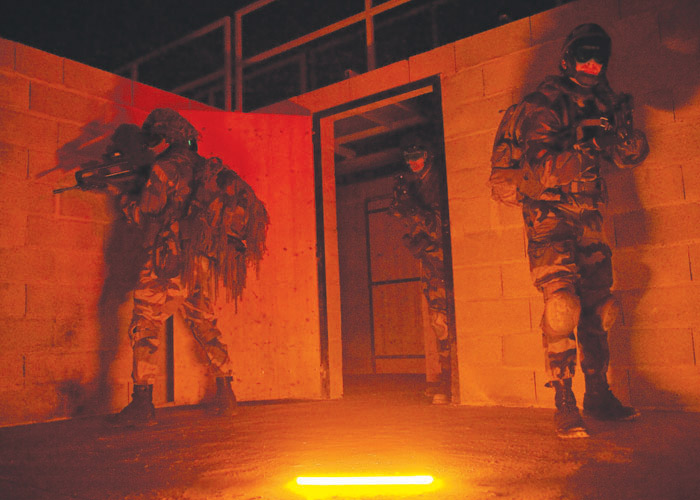Lighting up / Marking areas and pathways
Cyalume products will help you to mark and identify areas of operation
Convoy marking for troop safety
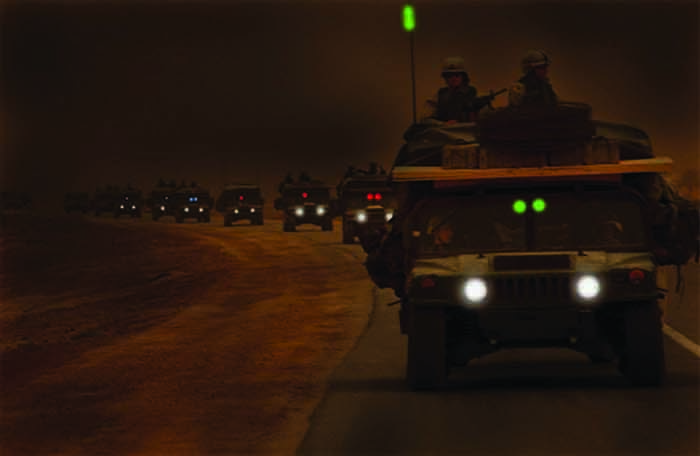
Identification of tactical moves in convoys
Cyalume sticks are used in operation areas in order to illuminate battlefields, mark areas and codify the advancement of troops.
During tactical moves in convoys, circular (Lightshape) markers can be used to mark vehicles using the appropriate color code during convoys. Sticks are used to light up routes in order to ensure the safety of the convoy.
- Route marking / Critical point marking: color-coded turns, marches, refueling and mechanical maintenance points, assembly points on a route and remote indication of an assembly point.
The US Military Police use red light to direct convoys to their assembly point at night. - How to control the device: The 15, 25 or 40 cm sticks used with directional handles optimize visibility at night.
- Marking the units as well as the leader: Place the sticks on top of the antennas, on vehicles with magnetic bases or on trailers. Identify the different types of vehicles (tanks) using a color code.
- Identification of an area that needs to be explored upon ground impact.
- Helps increase visibility inside smoky areas (products remain visible behind a smoke screen) or in demolished areas.
- In the self-activating Impact version, it allows the intervention forces to detect the presence of any kind of immediate danger in a dark room (street fighting) without risk of explosion.
The more marked and illuminated an area is, the easier it is for it to be located and the quicker the troops can advance. This is even more important for combat in urban areas.
The products in the CyFlect range can also be used to mark out corridors, stairs, emergency exits and even various types of soldier’s equipment (e.g helmets, shields, etc.).
Marking out shooting ranges
Non-IMPACT 40 cm visible sticks are oftenused to mark out the left/right boundaries of the shooting range. Infrared or red/green markings can be used to identify a shooting range during night shooting exercises. In order to mark the various areas of a shooting range, a color code can be used to identify: tower, ambulance, ammunition storage, used ammunition, briefing point, visitor’s tent, toilets etc… In order to illuminate a shooting range, a 40 cm light stick can be used in the event of an unexpected power outage.
- Marking training areas: 15 inch (40cm) visible light sticks 15 Inch (40cm) can be used to mark left and right camp boundaries
- Perimeter protection/warning: traps/light detectors that signal when someone is trespassing can be used to issue an initial alert when people are approaching. Color coding strategies
- Marking patrol routes: Use of MINI light sticks can be used as route markers or to mark any assembly points.
Visible and infrared light sticks can be used to color-code firing tanks, tanks that are almost finished firing and tanks that cannot fire (jammed firing).
- In order to illuminate the target, a lightstick can be attached to it when it is dark in order the ensure that the target will be able to be seen.
- In order to make it easier to see, a 4, 5 or 8 cm Cyalume light stick can be attached to the target to ensure the correct azimuth.
it is possible to use a variety of sizes, shapes and colours from the Cyalume range for any of the types of signs required in shooting exercises.
Cyalume sticks can be used to mark firing ranges
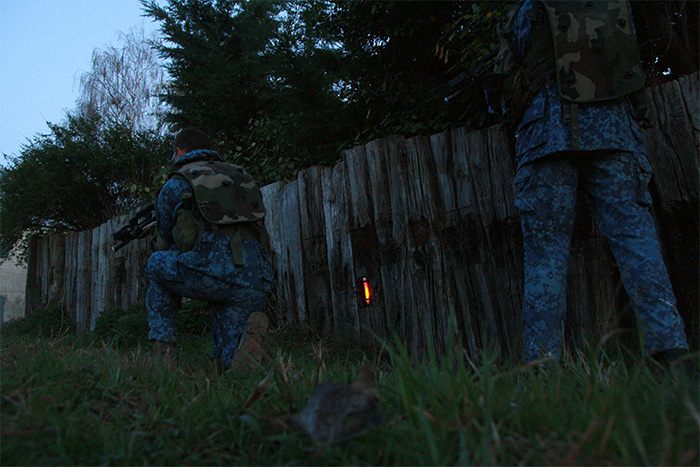
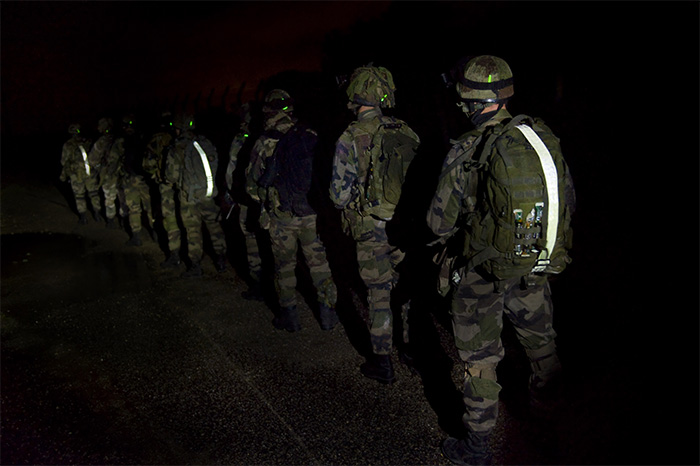
Cyalume sticks can be used to identify units and assembly points
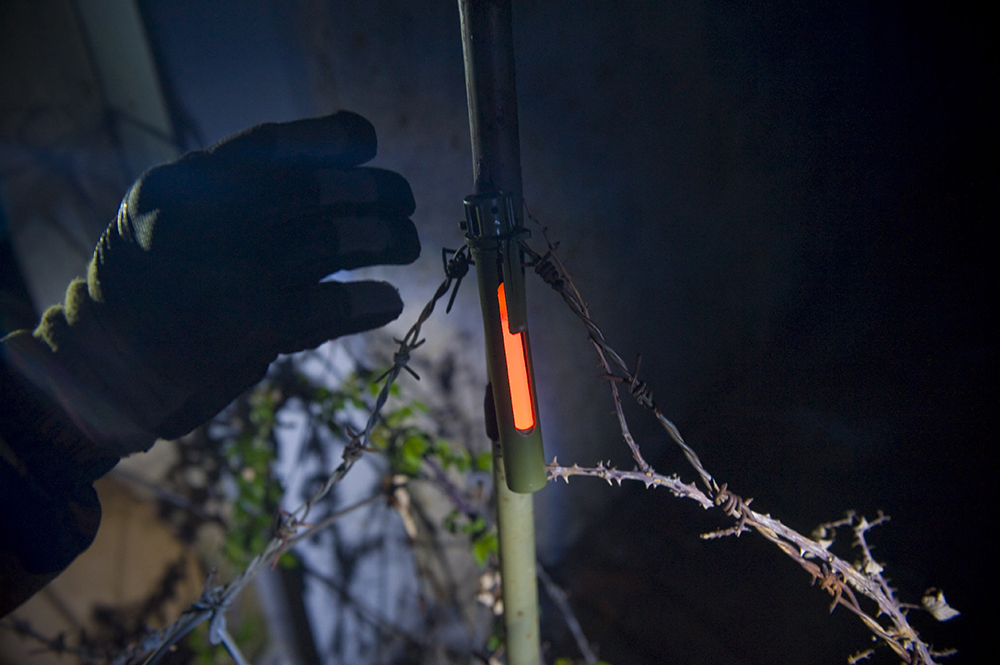
From very bright, high intensity sticks to Mini infrared ones, Cyalume offers a wide range of marking and identification solutions.
Assembly points
Chemlights can be used during night walks or in areas where there is poor visibility, by guides who join the troop at meeting points. Sub-unit guides using colour coding gather together with the platoons/units and help them prepare the meeting areas. The people, vehicles, teams or positions of the units can be identified by Cyalume sticks.
To make movement to the meeting point easier, the access paths from the assembly point to the meeting area, as well as the entry and exit zones, are clearly indicated using Cyalumes.
For secret, night operations, several different marking techniques can be used for a smooth advancement. Scouts use both visible Cyalumes or infrared versions to see pre-established colour codes in order to recognise the route they’re taking so that followers can reach the assembly points more quickly.
Marking out hazardous areas/signaling obstacles / Road safety lighting
Cyalume sticks can be used in road safety as part of road traffic control at night or in the dark. They can be used with a directional handle or with cone supports placed at the top of construction cones or Lubeck’s cones.
In the event of any kind of incident or breakdown, Cyalume light sticks allow law enforcement officials or any individual to put markings on the ground in order to signal their position, mark dangers or obstacles, or even identify a perimeter.
- Use a lightstick attached to a magnetic base to mark an obstacle or vehicle stuck in total darkness at night.
- Hazard marking, immediate identification of any kind of danger
- Marking ground areas at night
Marking of areas before an operation and signalling of loads to be dropped
Docking at the beach
Cyalume sticks can be used for marking out areas of the beach in order to prepare for docking. Depending on the type of operation, visible light or infrared light sticks can be used to mark these docking areas at the beach.
Wind direction indicator
Light sticks thrown from an aircraft determine the the direction of the wind as well as its speed, over the Drop Zone (DZ), also known as the release area.
By lighting up runways, landing zones (Landing Zone LZ) or helicopter landing areas
10″ light sticks with tripods or 15″ inch light sticks can be used to mark the path and perimeter of landing areas
An inverted “Y” or “T” marks the landing point on the helicopter landing area as well as the approach direction.
Marking out the Drop Zone or Dropping Zone (DZ) as well as the areas where packages need to be dropped during airborne operations at night.
During unlit flights, the movement of loads can be easily detected by placing 1.5 inch MINI Cyalume sticks on the aircraft ground.
When releasing loads,Cyalume sticks can be used to mark airborne loads as well as to indicate the end of a rope: IMPACT 15″ (40cm) sticks that are activated as soon as there is impact with the ground can be used. They therefore indicate the location of the load as well as its contents with the help of a color code. Aerial drops are therefore identified immediately in the dark upon ground impact.
When placing loads on the sling, Flexbands hung around the hook make it easier to see and therefore, makes placing loads on the sling safer.
Helicopter access markings allow landing during night operations to go more smoothly due to better detection. Marking out areas and loads during air operations
Marking out areas and loads during air operations
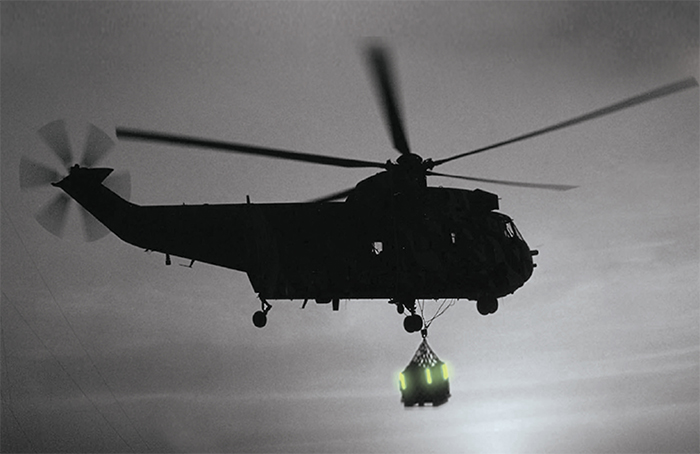
Marking and identification to improve accuracy and efficiency
Inspection, marking and identification of areas
Cyalume sticks can be used to mark, tag and identify buildings or any other type of structure:
- Scanning a suspicious area: throw a self-activating stick in the dark to allow police forces to detect the presence of any kind of immediate danger. The police officer does not become a potential target.
- Helps with searching in a confined atmosphere e.g inside smoky buildings or even inside constructed or demolished areas.
- Risk-free identification of an area that needs to be explored after there has been ground impact e.g in case of a potential chemical presence in the area (the product can be used in an explosive atmosphere).
- Color marking in the dark (e.g red = hazardous area / green = clear area).
- Directional information on the ground (e.g by forming an arrow) in either the visible or the IR version
- IR stick for undercover operations or searches in confined spaces.
Easier to mark areas with easy-to-use tactical lighting
